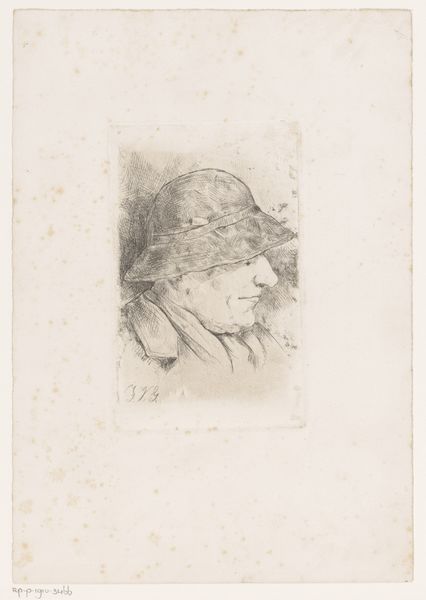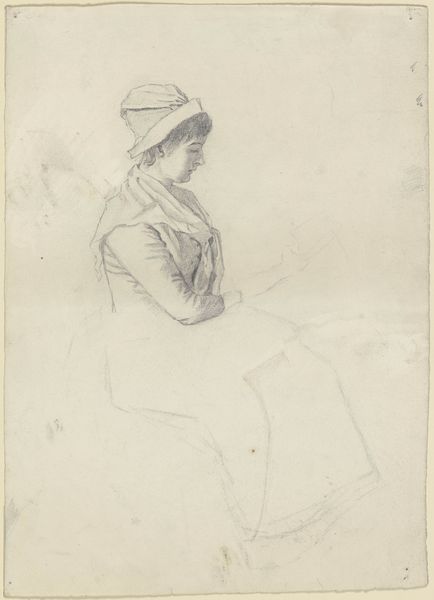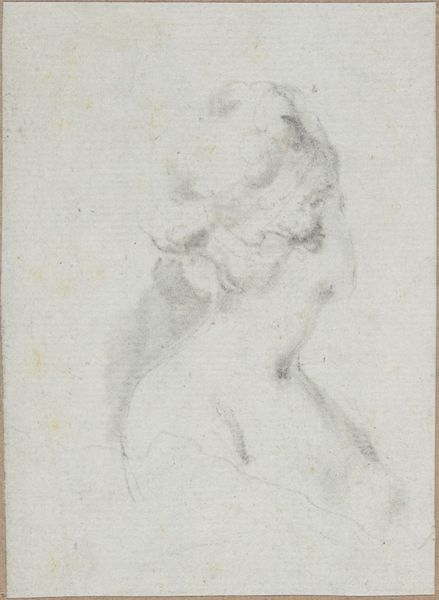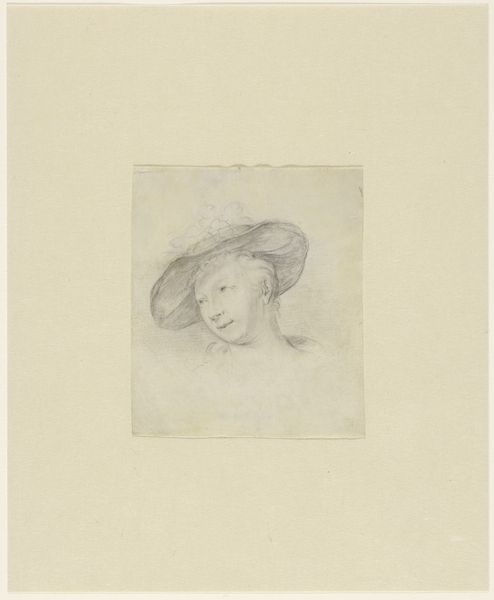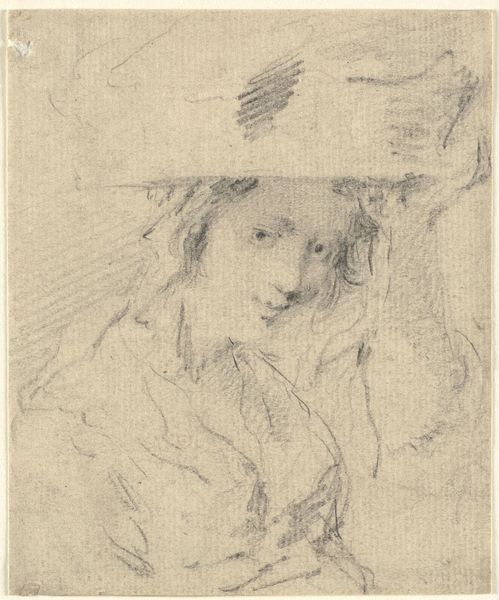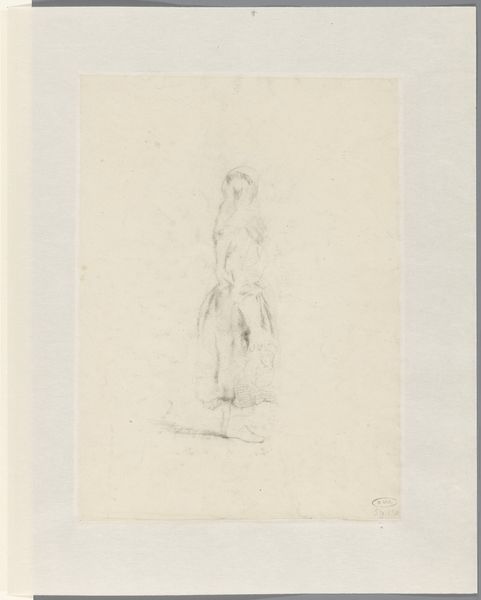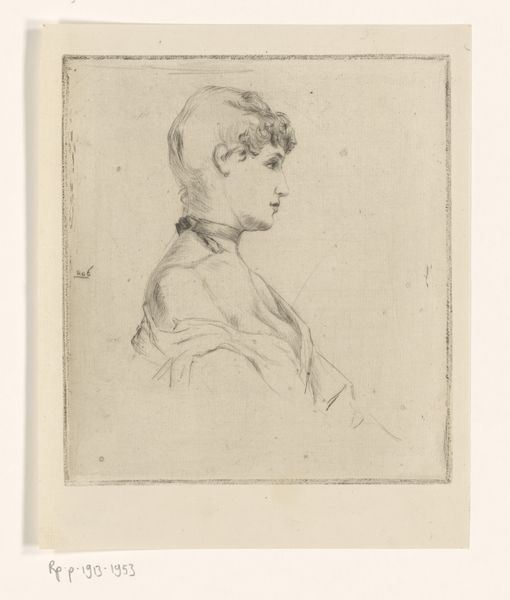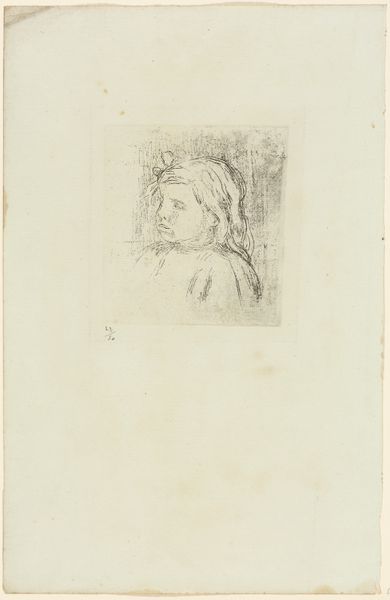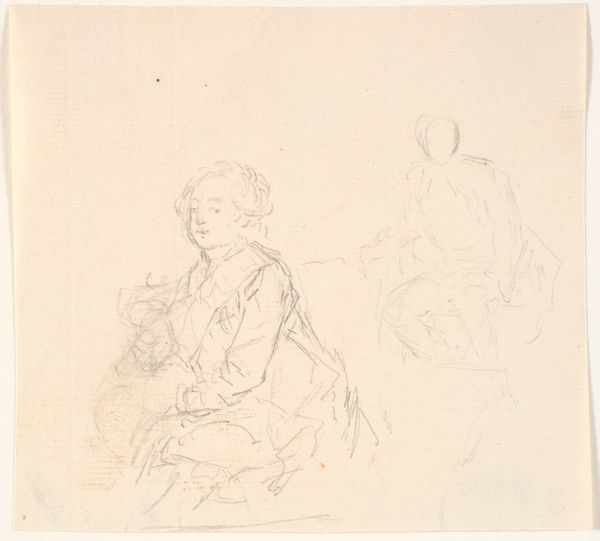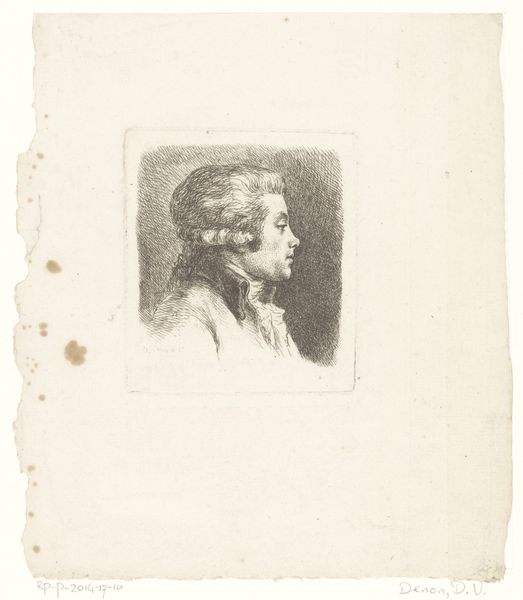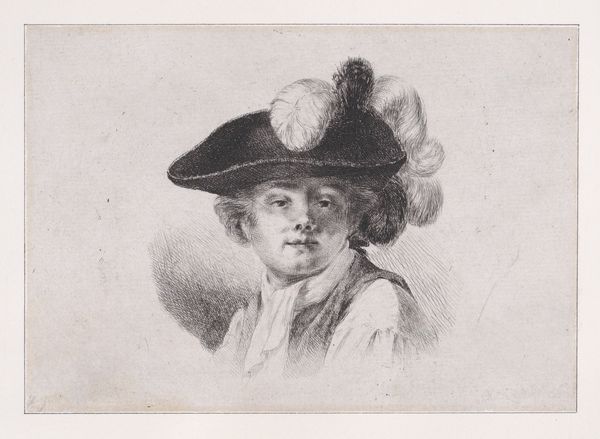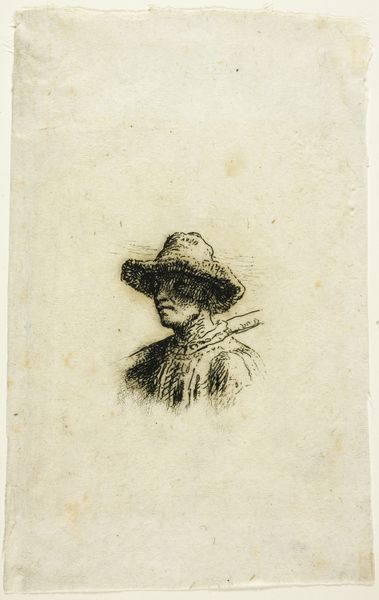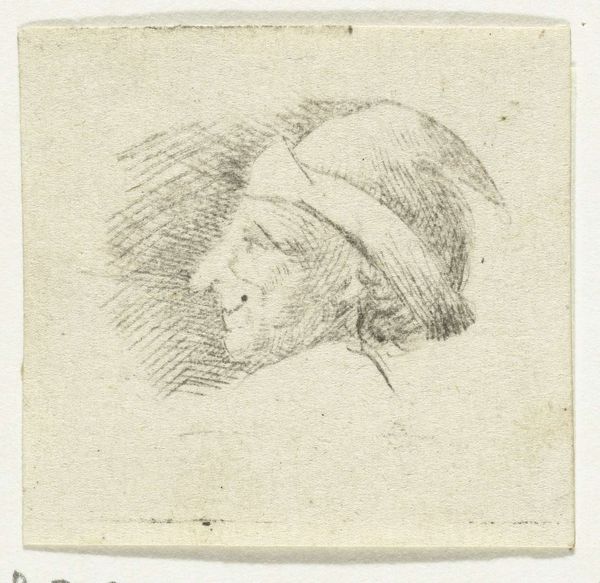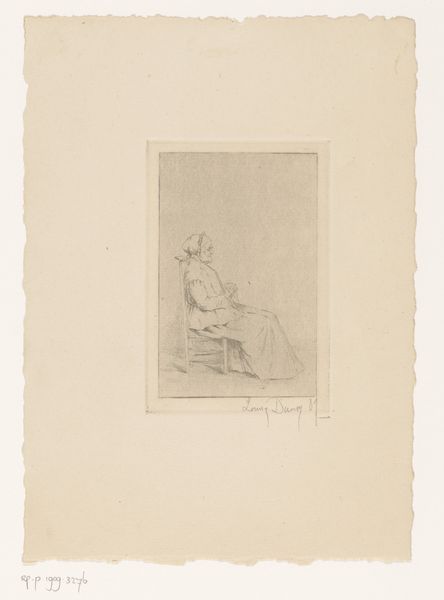
drawing, pencil
#
portrait
#
drawing
#
pencil sketch
#
charcoal drawing
#
pencil
#
academic-art
#
realism
Dimensions: height 232 mm, width 265 mm
Copyright: Rijks Museum: Open Domain
Editor: Here we have Frédérique Émile Auguste O'Connell-Miethe's pencil drawing, "Edelman uit de tijd van Lodewijk XIII," created in 1849. The delicacy of the lines almost gives it a wistful air. I'm curious, what stands out to you about this portrait? Curator: I’m drawn to how this 19th-century artist interprets the image of a nobleman from Louis XIII's time, reflecting the prevalent historical fascinations of the period. The choice of pencil, usually associated with preliminary sketches, for a finished work invites questions. What was the artist trying to convey about the past? Editor: Are you saying that the medium itself is part of the message? Curator: Precisely. The artist seems to be presenting history through a filter of immediacy and accessibility, quite different from the grand oil paintings often used for portraying historical figures. And notice how the composition is slightly off-center and includes what looks like a ghost of another figure on the left. Editor: I hadn't noticed the ghost image until now. How would you interpret that? Curator: Perhaps the artist is acknowledging the fragmented nature of historical knowledge, or suggesting that the past is never fully present. It's a visual reminder that history is always an interpretation. Do you think it gives it a modern feel, or just adds to the unfinished aesthetic? Editor: That makes sense. Considering that art schools were academies using 'copying the masters' as a primary learning method at the time, could this 'unfinished aesthetic' just be the student honing their craft? Curator: Absolutely, viewing it as a study piece certainly adds another layer of understanding, making us consider the institutional practices surrounding art production at that time. So many socio-cultural contexts influence this piece! Editor: I hadn't considered how art institutions would influence this, or any art really. It feels like a much deeper art historical point to analyze now. Thanks!
Comments
No comments
Be the first to comment and join the conversation on the ultimate creative platform.
